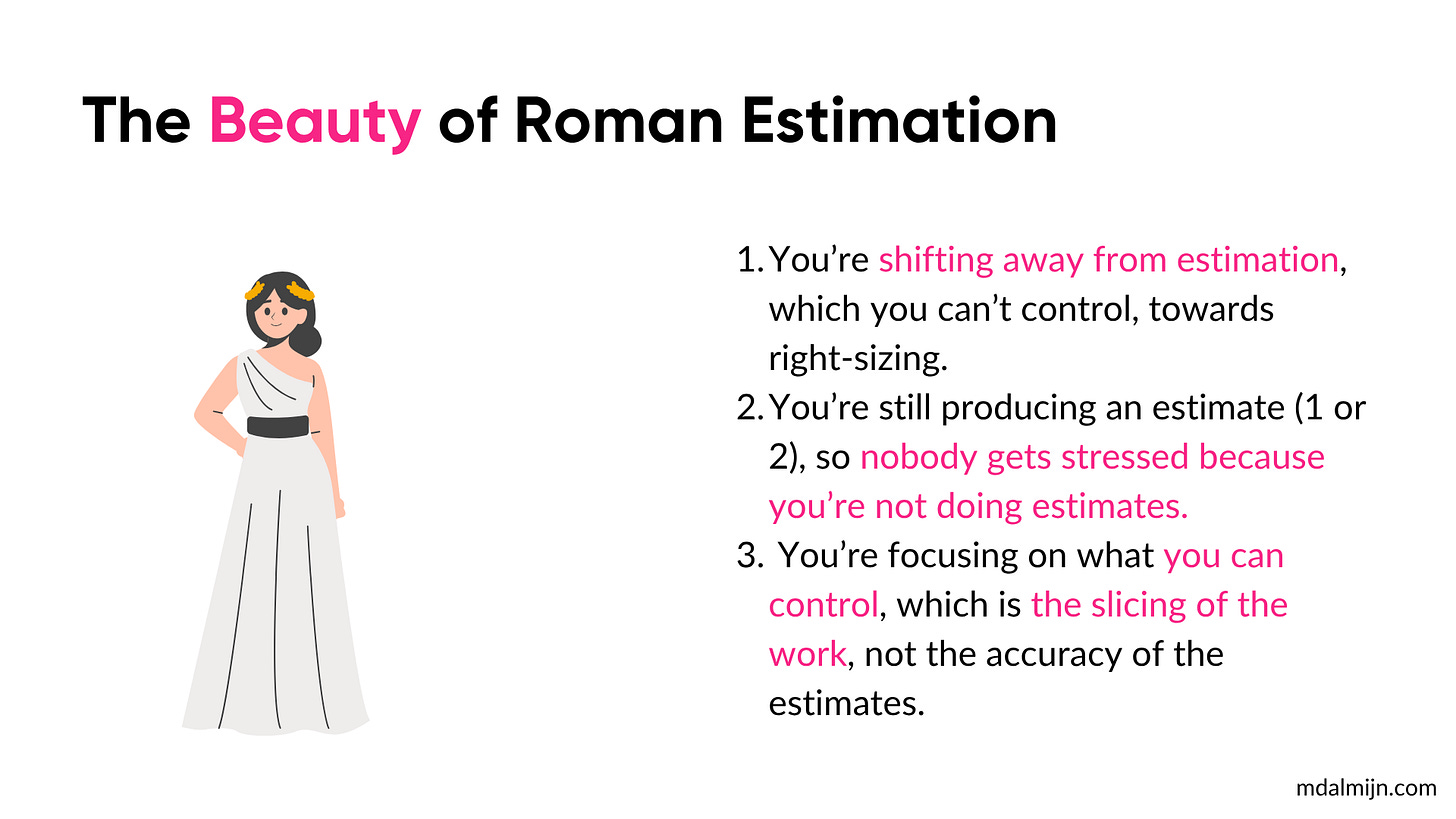Introducing Roman Estimation in Your Organization
Revisiting the Best Alternative to Story Points: How Do You Convince Your Stakeholders?
I’ve recently introduced Roman Estimation to two teams I’ve been working with. Both teams have achieved average cycle times below 4 working days and a median cycle time of 3 days or less. And all of that without wasting much time on refinement or re-estimation (around 0.5 - 1 hour per two weeks).
To help you introduce Roman Estimation within your organization, I’ve created a simple slide deck you can put in your Slack channel or any medium of choice.
Please let me know if anything is missing to help convince your stakeholders and I’ll gladly update this slide deck:
I want to stress, you don’t even need to convince anyone to try out Roman Estimation.
You’re still producing estimates and all the metrics they care about. You’re only doing it in a more effective and efficient way. If you want to prevent a drop in velocity, you simply adjust 1 and 2 to numbers that give your velocity the appearance that will please your stakeholders (the numbers are made up anyway).














This seems to me a rather simple and effective way to get to right-sizing… cool stuff!
I like to think about such things, thanks for sharing Maarten. Thinking about what’ll happen in a team with tasks in many different sizes. I saw teams having a good benefit of the flexibility in story points because they were able to use their average velocity (for them! 😊) during the planning to avoid dramatic overcommits.
When such a team has stories within the rage from 2-5 and will replace them with a 1 from your approach, they’ll lose sharpness.
How did you observe the switch on the estimation method in your teams?